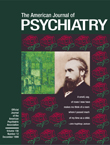In 1882–1884, Maxfield Parrish was an undergraduate at Haverford, decorating student publications and embellishing his chemistry notebook. Already a skilled draftsman, he had learned much from his father, an engraver and landscape painter. Seeking classical instruction in art and architecture, he left Haverford for the Pennsylvania Institute of Fine Arts. By 1898 he had moved near Cornish, N.H. This New England landscape became his inspiration, together with Hot Springs, Ariz., where he went to convalesce from tuberculosis in 1901–1902, and a sojourn in Italy in 1903 to illustrate Edith Wharton’s
Italian Villas and Their Gardens (1).
Typical of what was to become his popular appeal, by 1925, reproductions of Parrish’s painting Daybreak (1922) could be found in one in four American households, and the original, which sold for a record $10,000 (for a living artist) in 1925, sold again at Sotheby’s for a record $4.3 million in 1996. The merest mass reproductions now sell for hundreds of dollars on eBay.
This book, the catalogue of an exhibition held at the Pennsylvania Institute of Fine Arts and three other institutions in Philadelphia between June 19, 1999, and August 6, 2000, is a more readable introduction to Parrish than Ludwig’s longer, also lavishly illustrated book
(2), and it begins to analyze in more mental terms the artist’s appeal throughout and since his long career (he painted to the age of 91, 4 years before he died in 1966). Edward O. Wilson proposed that there were innate human cultural universals
(3). Several reasons for Parrish’s wide, if not universal, appeal can be developed from Yount’s book.
First, the color blue, with which he always began his later paintings, and which he explored with translucent splendor by a smooth technique of glazes and varnishes especially amenable to color reproduction (and similar to halftone color separation). Yount cites a study that found Americans favored a “tranquil, realistic blue landscape” (p. 15) of the sort scorned by critics, and concluded that this type of work “is genetically imprinted in us, that it’s the paradise within, that we came from the blue landscape and we want it” (p. 16). As Parrish remarked, “They all seem to like the tiresome M[axfield] P[arrish] blue” p. 106).
Second, an architectonic “dynamic symmetry” (p. 101) used in Daybreak and after, and drawn from classical sources. This offered a reassuring order, against which his portrayed figures could dally. Thus, a mathematical consilience (3) underlay his composition, like the Parthenon.
Third, humility, simplicity, and an avoidance of intellectuality. Parrish said that “the picture tells all there is, there is nothing more” (p. 102) and “it doesn’t mean an earthly thing, not even a ghost of an allegory: no science enlightening agriculture: nobody enlightening anything. The endeavor is to present a painting which will give pleasure without tiring the intellect: something beautiful to look upon” (p. 99).
Fourth, portrayal of “a believable, if highly theatrical, utopian paradise” (p. 106), which Parrish considered “unattainable” (p. 117), presented with a “Pre-Raphaelite feeling” (p. 54) in “a hyperrealistic style” (p. 106) that masked “the artifice of his subject matter” (p. 106). His images “apparently crossed gender, class, generational and geographic boundaries” (p. 103) and appealed to each age of Americans, from those “struggling through the Great Depression” (p. 117) through “the feel-good climate of Reaganomics” (p. 121).
Fifth, a conflation of locales. Southwestern and New England vistas produce a “simultaneously regional and national appeal” (p. 117) for Americans.
Sixth, an androgynous sexuality of preadolescence that “tweaked adult sexual anxieties at a time of increasing sexual freedoms—both titillating and calming viewers with an ideal of naked innocence and youthful abandon” (p. 106). Parrish got away with using his own preadolescent children as nude models as photographer Sally Mann did not in our era of sensitivity about potential child abuse. “His seemingly liberated female figures…perched on precipices…have broken free of their chains and achieved…almost orgasmic claims of freedom and joy” (p. 109). For years Parrish painted “girls on rocks” (p. 113), contrasting their soft flesh with the rock surfaces, a common dream element representing the maternal breast. The androgynous universality is illustrated by his use of male models for female figures and vice versa (he always worked from photos). For example, Susan Lewin, described as Parrish’s “beloved model” (p. 100) (at times he lived with her in his studio while his wife and four children lived in another house), often cross-dressing, posed for all but two of the more than 70 figures, male and female, in The Florentine Fete (p. 100). Parrish himself posed for the bending female figure in “Ah never in the world were there such roses” (p. 67) as well as for Jack Frost (p. 75) and other male figures.
Seventh, good nature and a sense of humor. A happy man in the Arcadian beauty of elite Cornish, N.H., “home to a number of women of unusual beauty” (p. 101), in an age in which “men talked and women listened...[and] men act/women appear” (p. 101), he painted constantly to age 91, abandoning figures for landscapes alone after Jack Frost at age 66. He was able to adopt a child’s point of view (p. 49) in his illustrations for Mother Goose in Prose, The Arabian Nights, and Greek Mythology and was adept at humorous caricatures, often of himself.
To all of the above, I would add the fractal geometry of nature
(4). Parrish’s geology is accurate, like Leonardo’s, and his rocks and mountains are remarkably like those derived from Mandelbrot’s fractals
(5). Parrish painted exactly from photos and often used elaborate studio setups of real rocks. His trees, clouds, and white water resemble the mathematically true branching of the natural world. This lawfulness can be overstated, but it is part of the compelling authority of Parrish’s fantasy.

